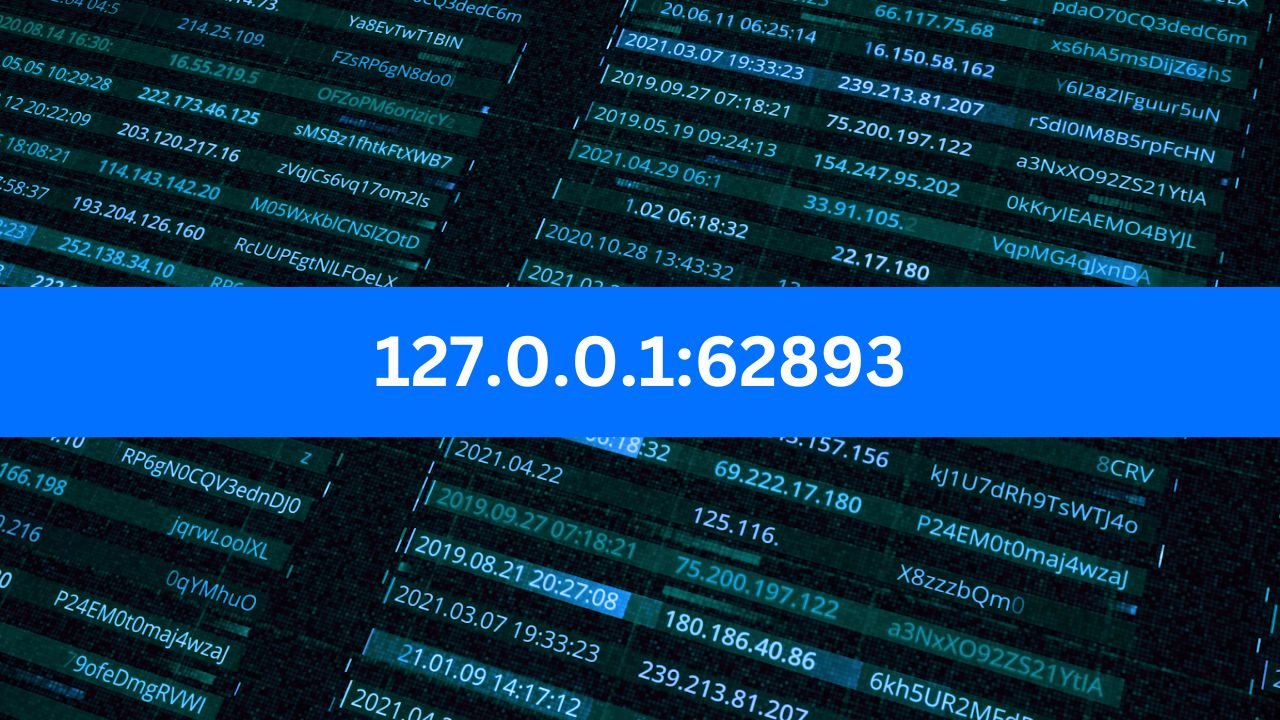
127.0.0.1:62893 – Your Ultimate Guide
Welcome to the virtual realm of 127.0.0.1:62893! Have you ever encountered this mysterious error code while diving into the depths of software testing or coding adventures? Fear not, for we are here to unravel the enigma surrounding 127.0.0.1:62893 and guide you through understanding its significance, operational mechanisms, troubleshooting techniques, and more in this blog post. So, buckle up as we embark on a journey to demystify 127.0.0.1:62893 and equip you with the knowledge to conquer any challenges it may throw your way!
Exploring the Significance of 127.0.0.1:62893
Have you ever wondered about the significance of 127.0.0.1:62893 that pops up during your development endeavors? This unique combination represents the loopback IP address and a specific port number on your local machine, acting as a gateway to test applications locally.
When you see 127.0.0.1:62893, it signifies communication between software components running on your computer, allowing for efficient debugging and testing without needing external servers or networks. Understanding this code is vital for smooth software development processes.
Read Also: This Blog Will Show You About The New Digital Technology in Thailand
Operational Mechanisms of 127.0.0.1:62893
Have you ever wondered how 127.0.0.1:62893 actually operates behind the scenes? This unique combination represents the localhost IP address paired with a specific port number for communication within your system. When you access this address and port, it acts as a gateway to interact with services running on your local machine.
By utilizing 127.0.0.1:62893, you can establish connections between different applications or processes within your computer without external interference, ensuring secure data transfer and efficient operations. This operational mechanism enables seamless communication between software components, enhancing overall performance and productivity in your development environment.
Safeguarding Port 62893: Public Accessibility Concerns
Port 62893 is a crucial gateway for communication between different software applications on your local machine. However, this open port can also pose security risks if left unprotected. Public accessibility concerns arise when unauthorized users gain access to this port, potentially compromising sensitive data or launching malicious attacks.
To safeguard port 62893 from unauthorized access, it is essential to implement robust security measures such as firewall configurations and network monitoring tools. By restricting public access to this specific port, you can significantly reduce the risk of potential vulnerabilities and breaches in your system.
Taking proactive steps to secure port 62893 not only protects your data but also ensures the smooth operation of your applications without interference from external threats. Stay vigilant and prioritize the security of all ports on your system for enhanced protection against cyber threats.
Read Also: https : Ontpress.com | AI Reels AiperezTechCrunch
Optimizing Testing with Localhost: Benefits and Utilities
Are you a developer looking to streamline your testing process? Optimizing testing with localhost can be a game-changer. By utilizing 127.0.0.1:62893, you create a secure environment for running tests locally without affecting production systems.
Localhost enables rapid feedback loops during development, allowing you to test changes instantly and iterate efficiently. With the benefits of isolation and control over the testing environment, debugging becomes more straightforward and less time-consuming.
Troubleshooting Error 127.0.0.1:62893
Encountering an error like 127.0.0.1:62893 can be perplexing for many users diving into the realm of localhost testing and port configurations. Understanding the root causes behind this issue is crucial to efficiently troubleshoot and resolve it. Let’s delve into some common triggers that may lead to this error popping up unexpectedly.
One potential cause could be misconfigurations in your development environment or conflicts with other applications utilizing the same port. Ensuring that there are no overlapping processes trying to access port 62893 can help mitigate such conflicts effectively.
Port 62893 and Localhost: What’s the Link?
When it comes to exploring the intricacies of port 62893, understanding its connection to localhost is crucial. Localhost, often referred to as home for your computer, serves as a gateway for testing applications locally. Port 62893 specifically designates a unique channel through which data can flow between your local machine and applications.
The link between port 62893 and localhost lies in their collaboration to enhance the functionality of software during development and testing phases. By utilizing this specific port on localhost, developers can efficiently debug code, test new features, and ensure seamless integration without relying on external servers.
Analyzing Common Error Triggers
When encountering the error 127.0.0.1:62893, understanding common triggers is crucial for troubleshooting success. One prevalent issue stems from incorrect port configuration or conflicts with other applications using the same port number. This can lead to communication breakdowns between the server and your local machine.
Moreover, firewall settings may block access to port 62893, causing connectivity disruptions and resulting in errors like “Disconnected From The Target VM.” Additionally, outdated software versions or incompatible dependencies could trigger unexpected behavior when trying to establish a connection through localhost.
Implementing Fixes for “Disconnected From The Target VM” Error
By implementing the fixes discussed above, you can effectively troubleshoot the “Disconnected From The Target VM” error related to 127.0.0.1:62893. Remember to utilize these solutions with caution and attention to detail for optimal results in resolving this issue. With a better understanding of port 62893, localhost, and common error triggers, you can navigate through troubleshooting processes more confidently and efficiently. Stay proactive in addressing any technical challenges that may arise, ensuring smoother functioning of your systems and applications utilizing 127.0.0.1:62893 for local testing and development purposes.
Read Also: Industrial Chiller Solutions for Your Manufacturing Needs
Conclusion
Understanding 127.0.0.1:62893 is essential for network professionals and developers. This loopback address and port combination plays a pivotal role in local development, network security, and performance monitoring. By adhering to best practices and regularly monitoring this endpoint, you can ensure your applications run smoothly and securely.
FAQs:
What is 127.0.0.1:62893?
127.0.0.1:62893 refers to a combination of an IP address and a port number. 127.0.0.1 is the loopback IP address used by a computer to refer to itself, while 62893 is a specific port number used for network communication.
Why is 127.0.0.1 called the loopback address?
127.0.0.1 is called the loopback address because it is used to test network software without sending packets over a physical network. It allows a machine to communicate with itself.
What is the purpose of port 62893?
Port 62893 is a virtual endpoint used for data transmission in networking. Its specific use depends on the application or service configured to use this port. It can be used for development, testing, or specific network services.
How is 127.0.0.1:62893 used in local development?
In local development, 127.0.0.1:62893 is used to run and test applications on a developer’s local machine. This ensures that the application works correctly before it is deployed to a live environment.
Can 127.0.0.1:62893 be accessed from outside my network?
No, 127.0.0.1 is a loopback address that can only be accessed from the same machine. It is not reachable from external networks.
How does 127.0.0.1:62893 contribute to network security?
By monitoring traffic on 127.0.0.1:62893, network administrators can detect unusual activity that might indicate a security issue, such as unauthorized applications or potential breaches.
What are common issues with 127.0.0.1:62893?
Common issues include connection refused errors if the service on port 62893 is not running, and slow response times due to resource constraints or network congestion.



